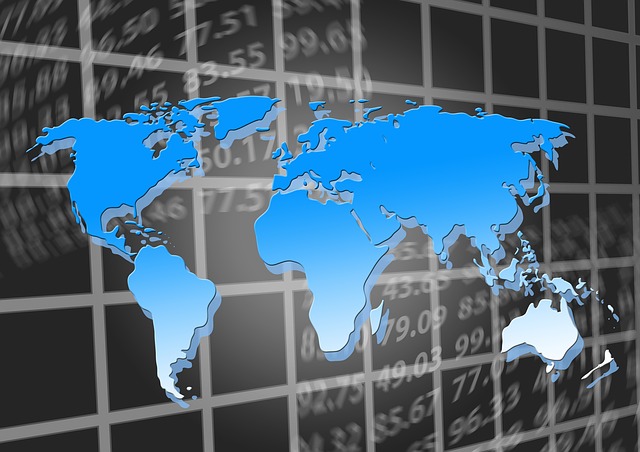DNB: Containing the effects of geopolitical fragmentation
DNB: Containing the effects of geopolitical fragmentation

In his speech today at Eurofi governor Knot (DNB) warned against the growing geopolitical tensions and geo-economic fragmentation, and their impact on cross border trade and investment. He said that while protecting their strategic interests, European policymakers should strive to protect free trade and not undermine the internal market. We should therefore be selective in our policies to increase strategic autonomy.
Thank you. It’s always a pleasure to be at Eurofi, a great meeting place to exchange views on finance and the economy. And could there be a more fitting place for this than the city of Ghent? When you are in the city centre, and you walk from the magnificent Belfry tower, past the St Nicolas church, to the St Michiels bridge and the Korenlei, you cannot escape the impression that this is a city that not only has a rich history, but also a history of richness.
And indeed, in the 13th and 14th centuries Ghent was the Silicon Valley of Europe. It was the first real industrialised city, where wool was transformed into very fine cloth, ‘laken’ in Dutch, which was in high demand in the rest of Europe. This industry was so highly developed that wool was imported from Scotland and England. Thanks to innovation and trade, Ghent was one of the biggest and most prosperous cities in Europe.
Free trade, economic growth, prosperity: they often go together. And that is a fitting illustration of why we should be concerned also today about the growing geopolitical tensions and geo-economic fragmentation, and their impact on cross border trade and investment.
Let’s have a look at the history of trade. As the chart shows, free trade has experienced periods of rise and fall throughout history. During much of the 19th century we saw an increase in trade, as measured by the global-trade-to-GDP ratio.
This golden age of industrialisation and international trade came to an abrupt end with the outbreak of World War I. During the first half of the 20th century, world trade collapsed as a result of the Great Depression, nationalism and war.
In the post-war decades, there was a prolonged period of growing world trade. Of course, it was the period of the Cold War, and trade between the eastern and western blocs was very limited. Nonetheless, world trade increased, driven by the post-war recovery and policies of trade liberalisation.
After the fall of the Iron Curtain, trade between east and west expanded rapidly. This coincided with a period of hyper-globalisation in the 1990s and 2000s. The IT-revolution, multilateral trade liberalisation and an easing of global politics all worked together to boost global economic and financial integration to levels never seen before. A historic moment was when China joined the WTO in 2001. Closer to home, the introduction of the euro was a huge milestone. Not surprisingly, this was also a period marked by high economic growth.
However, the pace of globalisation has stagnated since 2008, with trade-to-GDP stabilising. Over the past five years, the threats to free trade and investment have increased. Scepticism about globalisation has grown. International cooperation is in retreat. Brexit, ongoing tensions between the US and China, the Russian invasion of Ukraine and the conflict in the Middle East have put further pressure on globalisation. In response to geopolitical developments, countries and blocs more often apply a policy of strategic autonomy.
According to the IMF, around 3,000 trade restricting measures were imposed last year—nearly triple the number imposed in 2019. And many firms around the world are reorganising their supply chains and are considering re-shoring, near-shoring or friend-shoring. So while global trade is still resilient, we are already seeing more and more cracks appearing under the surface.
Of course, these policies don’t come out of nowhere. Strengthening national security and curbing strategic economic risks are logical policies in a world that has become a more dangerous place. But, if not properly managed, the economic costs of these policies could be very high.
Coming from the Netherlands, I know the benefits of free trade for a small and highly open economy. Our share of imports and exports is almost 180% of GDP, one of the highest in the world. That makes us vulnerable to disruptions in global value chains.
While the Netherlands may be a rather strong case of economic openness, the essence also holds for the EU as a whole. The numbers show that even as a bloc, the EU economy is more open than, for example, China and the US. EU trade with other countries is more than 40 percent of EU GDP. Europe has prospered as an open economic region, but is also more heavily exposed to the effects of geo-economic fragmentation.
And let’s not forget that today’s economies are much more connected than only a few decades ago. Global trade-to-GDP is now 60 percent compared to 24 percent during the Cold War. That tells us that this time the potential costs of fragmentation are much higher.
Let’s have a look at the channels through which fragmentation impacts the real economy and financial stability.
From an economic viewpoint, an increase in geo-economic fragmentation can be seen as a negative supply shock. Such a shock has a downward effect on economic growth and an upward effect on inflation through increasing trade costs. Fragmentation in the form of increasing trade restrictions leads to higher import prices, market segmentation and reduced access to technology and knowledge.
Cost estimates of trade restrictions vary widely. But we do know that they are particularly high in the case of barriers to technology diffusion and disruptions in global value chains. The IMF estimates that trade fragmentation could reduce global GDP volume by up to 7% over time. And as we know, countries that rely more on international trade are particularly susceptible to trade fragmentation.
Another transmission channel of fragmentation is inflation. International political tensions make inflation dynamics less predictable. An example is the current situation in the Middle East. An escalation of the conflict could trigger a spike in commodity prices that could impact price stability.
A quite prominent case is the attacks by Houthis on cargo ships in the Red Sea. Some shipowners have decided to send their ships on the much longer route around the Cape of Good Hope. Obviously, this disrupts global value chains and raises transportation costs. These are the types of events that inflation models do not take into account. This makes inflation less predictable and it makes the job more difficult for central bankers.
Fragmentation does not only impact the real economy and inflation. It also impacts financial stability. First of all, weaker growth and higher inflation make it more likely that banks and other financial institutions will incur credit and market losses. Restrictions on the flow of capital and investments limit the ability of financial institutions to diversify their portfolios. Fragmentation is also associated with a more challenging cyberthreat landscape. State actors have become more active in this area, and geopolitical conflicts have become more hybrid.
Perhaps the most important way in which fragmentation impacts financial stability is when we cannot find each other any more in important cross-border challenges. And there are many such challenges. During the Global Financial Crisis, policymakers around the world were able to respond swiftly and effectively. This was possible thanks to good relations among public-sector financial decision makers and solid institutional structures that had developed over the years.
After the crisis, countries around the world, assembled in the G20, took the lead in hammering out a firm package of financial reforms. In a fragmented world, such a swift response is becoming more complicated. This could prove costly. That’s because the most important challenges to financial stability that we currently face are precisely the cross-border issues that we can only solve if we work together.
The clearest example is the energy transition. This is an area where geo-economic fragmentation could be particularly damaging. Access to commodities, raw materials and products for energy generation is essential for the energy transition. There is a high concentration of suppliers of these goods.
For many countries in Europe, China is the main supplier of energy transition goods, such as solar panels and lithium batteries. The same holds for the supply of critical and strategic raw materials. These are mainly sourced from non-EU countries. Think of Russian nickel, copper and cobalt. Hence, a global approach and multilateral cooperation remain key as we move forward with the energy transition.
We also continue to need a global approach to financial regulation. For example the regulation of non-banks, the so-called NBFIs. This sector has shown tremendous growth and now represents more than 50% of the global financial sector. Its significant cross-border interconnectedness requires that regulators worldwide work together on this issue.
Another example is the regulation of crypto assets. A number of incidents over the past years have highlighted the vulnerabilities in the crypto-asset ecosystem. These vulnerabilities also require a consistent international regulatory approach based on the principle of ‘same activity, same risk, same regulation’. If we do not work together, we risk a race-to-the-bottom dynamic where crypto dealers are located in the least regulated regions, but spark problems elsewhere.
So a global approach is key in many of the challenges we face.
But at the same time, we need to be realistic: geo-economic fragmentation is already underway. Policymakers face difficult trade-offs between dealing with geopolitical security concerns and minimising the costs of fragmentation. What we need are pragmatic approaches that preserve the benefits of free trade to the greatest extent possible while also safeguarding international cooperation aimed at solving global challenges.
What does that mean for EU policies?
First of all, a strong Europe is more important than ever. Our internal market can at least partly protect us from adverse developments elsewhere in the world. While Europe is relatively heavily exposed to fragmentation, on the positive side, we also have unique opportunities to deal with it as we are still far from having exhausted the full potential of our internal integration.
Therefore, as an economic antidote to global fragmentation, we should strive to further deepen the European Single Market. By removing the remaining internal barriers, for example, we would boost the mobility of labour and capital, and make it easier to transition to new technologies. Second, by completing the Capital Markets Union, we would help to mobilise much-needed funding for the EU’s enormous climate and digital investment needs.
To this extent, together with the Dutch Authority for Financial Markets we recently joined an increasingly impatient chorus of authorities having published a position paper containing concrete priorities and recommendations. Finally, by completing the banking union, we would stimulate pan-European banking competition and allow bank capital to be used more efficiently.
We do not only need to strengthen the internal market. We also need to find a balance between autonomy in strategic areas such as defence, healthcare and energy, and we must maintain a multilateral mindset.
It is common sense that Europe should protect its strategic interests and cut down on dependencies it doesn’t want. But while doing this, policymakers should strive to protect free trade and not undermine the internal market. We should therefore be selective in our policies to increase strategic autonomy. And the EU should make a strong stand for maintaining and supporting the multilateral rule-based system that has brought us stability and growth.
The people of Ghent knew the perils of geopolitics. During the Hundred Years’ War between England and France, trade with England suffered greatly. We too live in a time where war has come close to our borders, and geo-economic fragmentation is increasingly a reality. Yet, even in this new geopolitical reality, policymakers can seek pragmatic solutions that minimise the economic costs of fragmentation.
We should do our utmost to find these solutions. Because just as we need to protect ourselves, we also have to protect the free flow of goods, services, investment and knowledge. Things that are fundamental to economic growth and the prosperity of billions.








